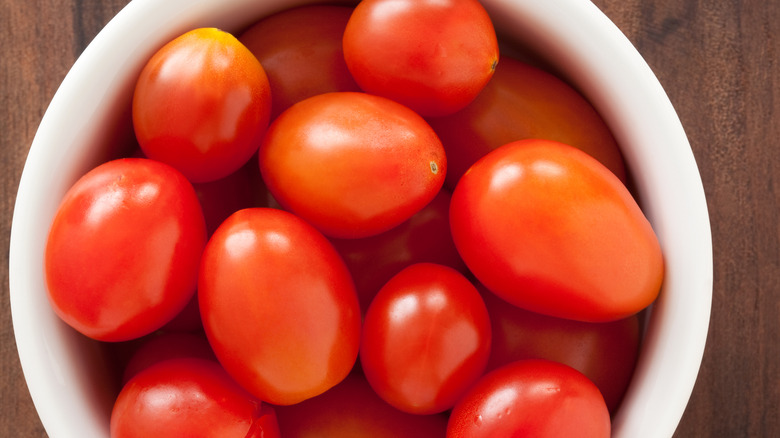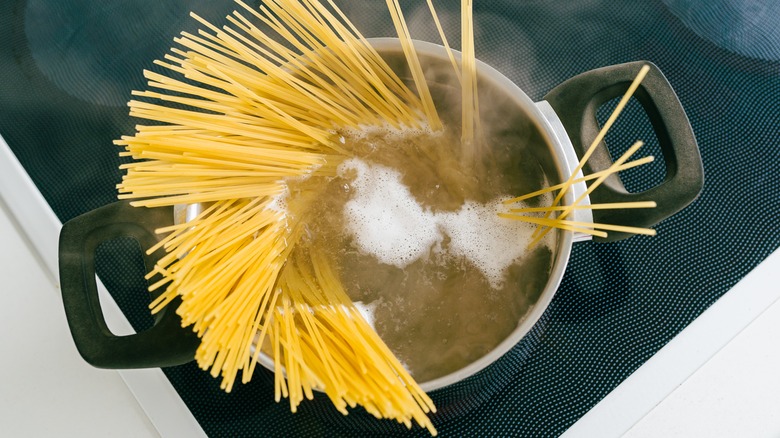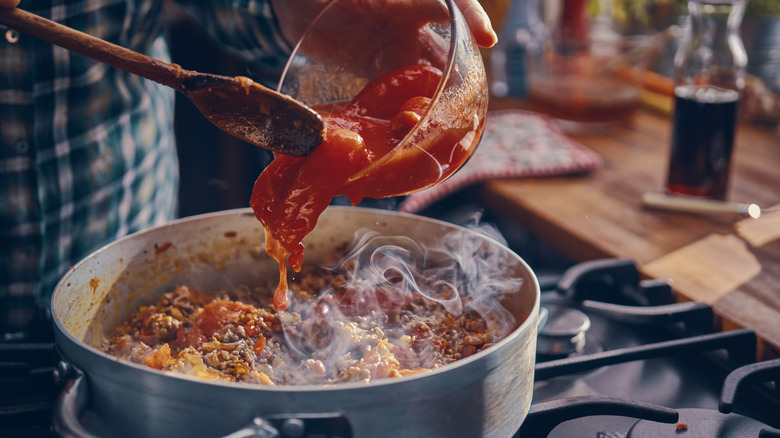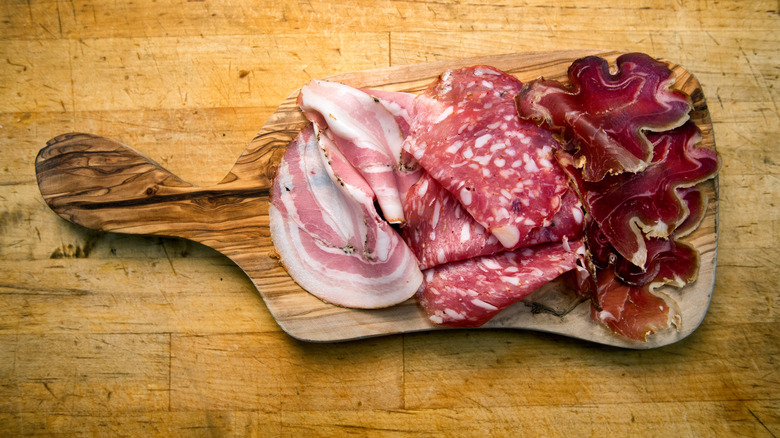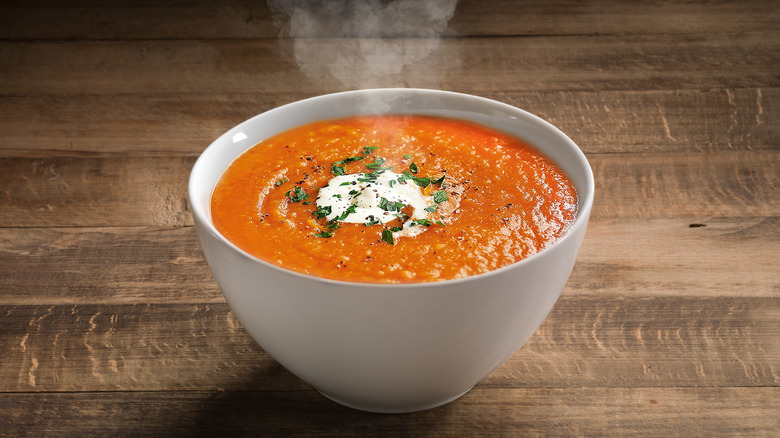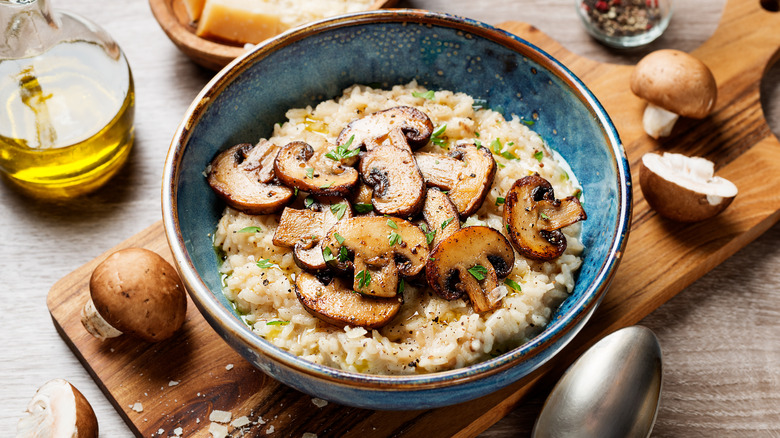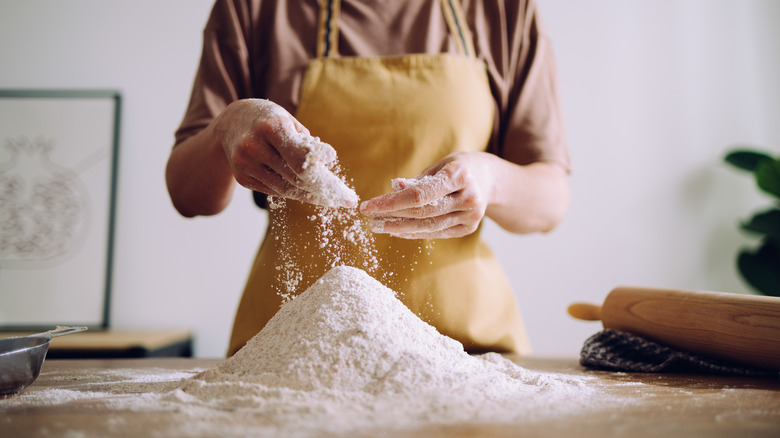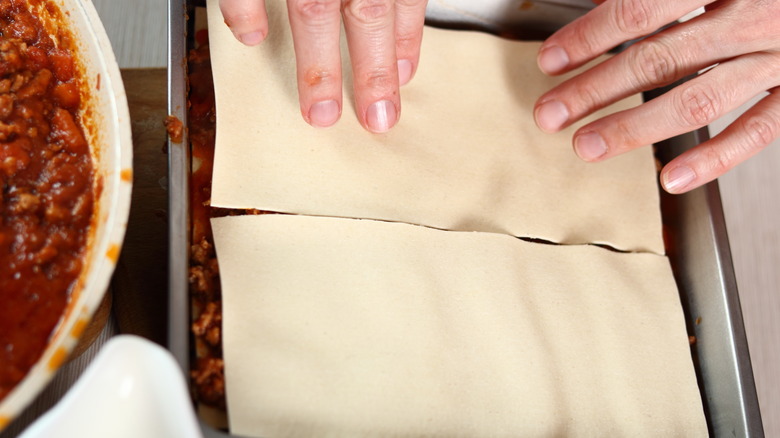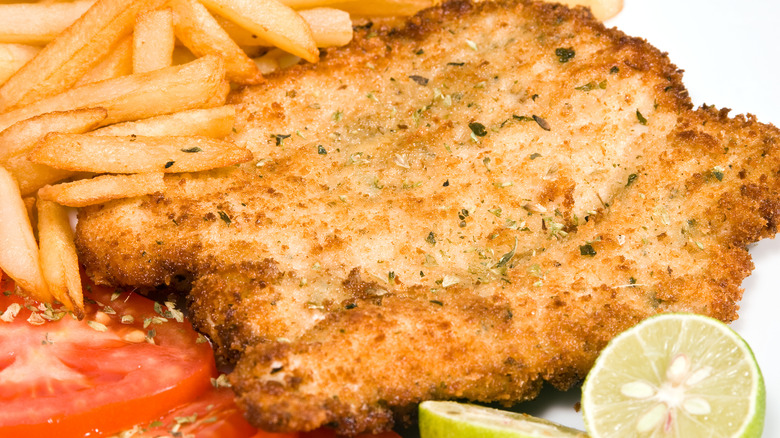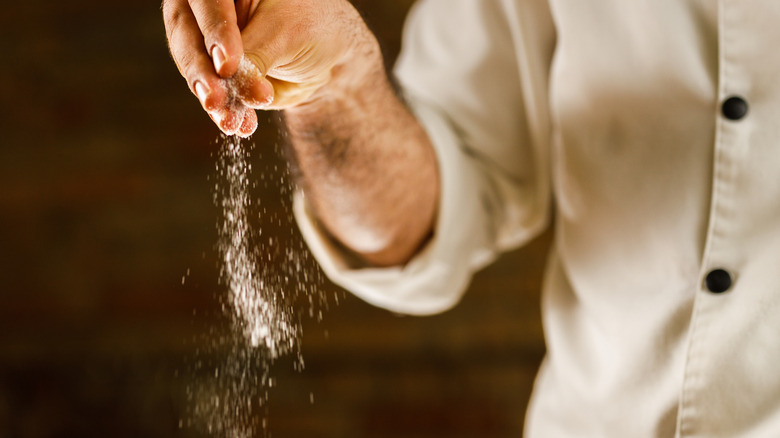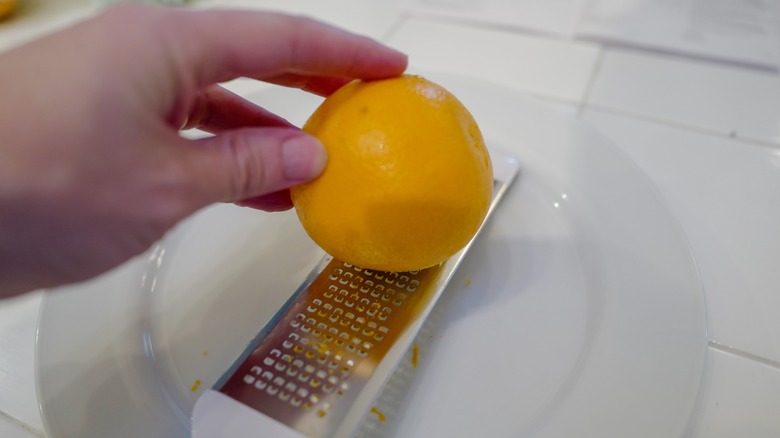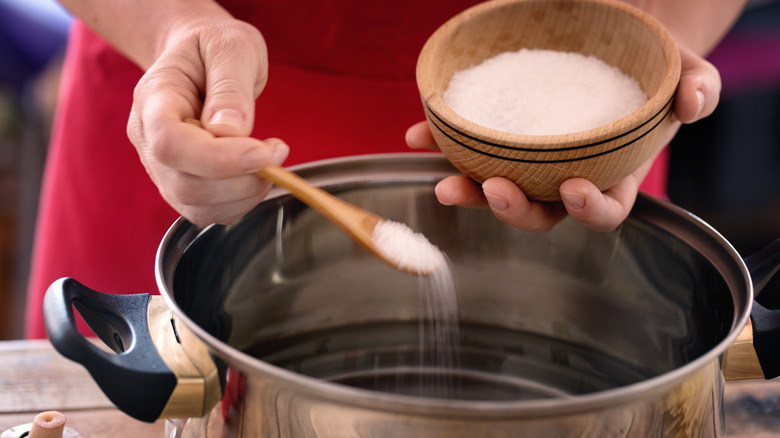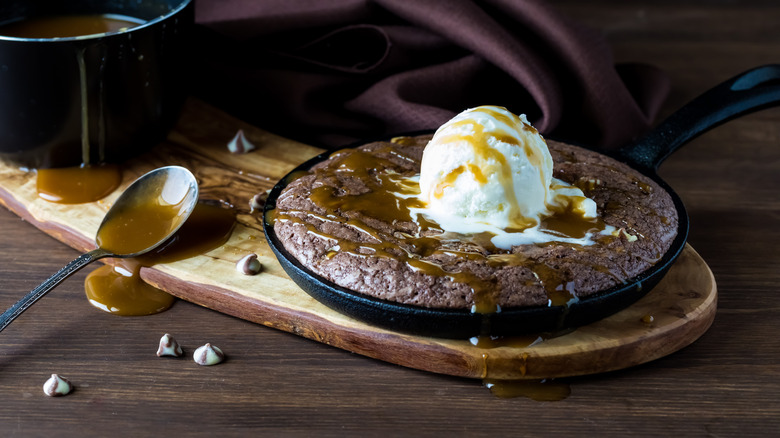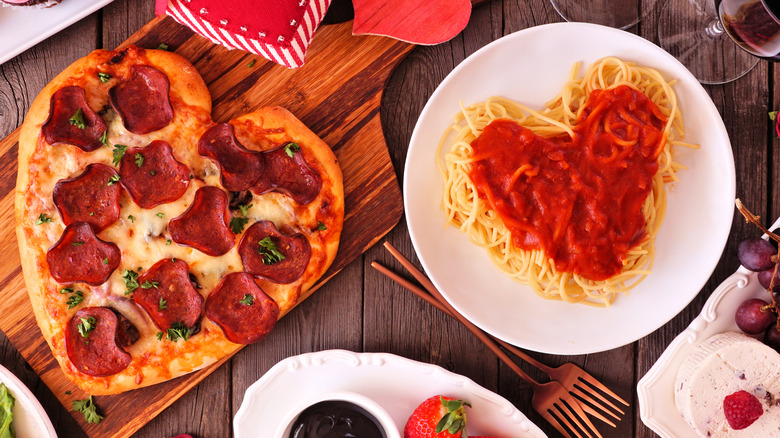The 15 Most Helpful Tips From Giada De Laurentiis' TikTok
Giada De Laurentiis, a fan-favorite of the Food Network, has taken TikTok by storm, becoming the queen of culinary TikTok. Her charm lies in the personal recipes she shares and her ability to make cooking seem effortless, engaging, and fun. Every TikTok video she posts is a vibrant collage of entertainment, instructional guidance, and an unabashedly genuine love for food that's so infectious it radiates through the screen.
These recipes aren't just about the end result; they're about the journey of cooking, joy of assembling ingredients, and the satisfaction of seeing them transformed into a yummy meal. She generously shares her wealth of culinary knowledge, and even the most intricate Italian recipes become approachable under Giada's guidance. These hacks, peppered throughout her videos make cooking less intimidating and more accessible to even a beginner.
We've carefully curated 15 of the best cooking tips from Giada's TikTok to transform how you work in your kitchen. They're culinary nuggets of wisdom born out of years of Giada's experience in the kitchen. They'll change how you cook, how you think about ingredients, and how you approach food in general.
Don't use knives on your tomatoes
In Giada de Laurentiis' kitchen, there are other tools (over a knife) she reaches for when dealing with tomatoes. She'll use a knife on tomatoes when preparing a salad, but not for anything else. Like so many of her cooking techniques, this is reflective of her Italian roots, which use the tools at hand to get the job done.
Giada swears by the Italian tradition of using scissors to cut your tomatoes. It might seem unorthodox, but she says that it's the method she learned in the kitchen with her family.
Giada also suggests using the back of a wooden spoon to allow for a gentle touch when handling the delicate fruit. She demonstrates this technique in her quick one-pan Italian shrimp and rice dish, which she says is a go-to weeknight dinner for her family. The result? A delicious and aesthetically pleasing dish that is perfect for your next dinner party.
Hot pasta water is an Italian cooking secret
Italian cuisine is rich in flavors and filled with centuries-old cooking techniques that make it stand out. One of these best-kept secrets is the magical use of pasta water. It's imbued with starch and salt, which gives it a unique ability to bind and enhance flavors. It's a secret weapon in Giada De Laurentiis' culinary arsenal.
For instance, Giada advocates using pasta water for deglazing pans. The bits of pancetta that get stuck to the pan are incredibly flavorful. Rather than losing these precious morsels of taste, Giada uses hot pasta water to dislodge them. It cleans the pan and creates a flavorful base that can be used in the pasta sauce itself.
When it comes to dishes like carbonara, where raw or lightly cooked eggs are incorporated, the danger of the eggs scrambling when added to the hot pasta is a real concern. Here again, pasta water comes to the rescue. Giada uses it to temper the eggs, bringing them gently up to the pasta's temperature, preventing them from scrambling. The pasta water allows for a smooth, creamy sauce that coats every strand of pasta perfectly.
Her recipes for dishes like cacio e pepe and zucchini carbonara underscore the importance of using pasta water for achieving that perfect finish.
Add red pepper flakes to your fruit salad marinade
Giada De Laurentiis doesn't shy away from taking culinary risks. Instead of adhering strictly to traditional fruit salad preparations that majorly focus on sweet flavors, Giada introduces a touch of heat to the mix by adding red pepper flakes to give a subtle spicy undertone that beautifully complements the sweetness of the fruits.
Consider, for example, Giada's Peach & Cherry Salad with Burrata, a recipe that beautifully marries these distinct flavors. Fresh, juicy peaches and cherries are the stars of this dish, their sweetness contrasting with the creamy burrata. The red pepper flakes add an unexpected twist, creating a layer of complexity in the flavor profile. The result? A salad that's not just sweet, but also tangy, spicy, and truly exciting to the palate.
By incorporating such a simple twist on a classic, Giada shows how even minor tweaks can transform a familiar dish into a fresh and exciting gastronomic experience.
Carrot absorbs acidity from canned tomatoes
Canned tomatoes are a staple in many kitchens due to their convenience, especially in creating flavorful pasta sauces. But the acidity of tomatoes can be overpowering and drown out the other flavors in a dish. In fact, Italians used to think tomatoes were poisonous. When they were first brought to Europe from the Americas, Europeans ate on pewter dishes that contained mercury based pigments. The acidity in the tomatoes used to draw out the mercury, slowly poisoning people (per Nutritional Outlook).
While we might not eat on dishes with mercury-based pigments anymore, acidity in tomatoes is still a problem. Giada De Laurentiis has a creative solution to this common issue: The humble carrot, which she adds to her tomato-based pasta dishes. According to Giada, carrots absorb some of the acidity from the tomatoes, and as they're rich in sugar, they infuse a subtle sweetness into the sauce. This simple, yet ingenious technique creates a more balanced flavor profile, allowing the savory notes of the sauce to shine without being masked by excessive tartness.
Use mostarda as your charcuterie board dip
The art of curating a perfect charcuterie board goes beyond arranging cheeses, crackers, and cured meats. Condiments and dips that accompany the main components of the board can greatly influence the overall flavor experience.
Instead of reaching for the typical hummus or store-bought dips, Giada De Laurentiis prefers the lesser-known Northern Italian condiment called mostarda. You'll find different preparations of mostarda all across Italy. In Cremona, for example, whole chunks of mixed fruit are used, while in Veneto, the foundation of mostarda is pureed fruit and it's more like a traditional jam. The latter is the kind that Giada uses, a delightful combination of candied fruit and mustard syrup that adds sweetness, tang, and spice. This unconventional dip is a surprising and delightful contrast to the fatty, rich elements typically found on a charcuterie board.
Giada clearly likes to balance sweetness with a bit of spice. As with her fruit salad, the two marry well together in this fresh jam with a kick.
Use white beans instead of cream in your tomato soup
Giada De Laurentiis' tomato soup recipe introduces a clever, healthier spin on this traditional comfort food. Cream-based soups often have a high-fat content that may not be ideal for all diets. To overcome this, Giada utilizes a surprising ingredient to achieve that desirable creamy texture: white beans.
In this innovative approach, Giada purees cooked white beans into tomato soup, which serves multiple purposes. First, it gives the soup a rich, velvety texture, making it feel indulgent without the excess fat. Moreover, white beans add a robust, earthy flavor that complements the tangy tomatoes beautifully.
White beans are also a great source of protein and fiber, both of which contribute to a feeling of satiety. This results in a soup that's not just comforting and delicious, but also nourishing and satisfying, making it an excellent option for a wholesome, balanced meal.
This bean trick isn't just a winner for tomato soup. It will work for any cream based soup — and for parents, it's a great way of sneaking some additional vegetables to your kids without them knowing.
Use carnaroli or fregola for creamier risotto
Risotto is an iconic Italian dish that is typically made with a long-grain rice variety like Arborio. However, in her own innovative spin, Giada De Laurentiis recommends using alternative grains such as Carnaroli or Fregola to achieve different, yet delectable, results. Either of these options can be swapped into any risotto dish.
Carnaroli is a medium-grain rice variety grown in Piedmont and Lombardy that is lauded for its superior consistency and texture. When used in risotto, it results in a dish that's creamier and richer as it can absorb liquid without losing its shape, making it a perfect fit for Giada's style of risotto.
Fregola is grown on the small Italian island of Sardinia and has a couscous-like bead shape. It adds a very nutty flavor to any dish, and the Giada-approved variant on risotto will absorb flavors well while retaining a slight firmness to the bite.
Keep your flour and nuts in your freezer
When it comes to the pantry, many people store their dry ingredients like flour and nuts in their cupboards. However, Giada De Laurentiis adopts a different approach, advocating for freezer storage for these specific items. Not only does this increase the lifespan of these kitchen staples, but it also helps to maintain their quality and flavor.
Flour and nuts are rich in oils, which can lead to oxidation and rancidity if left in warm temperatures for long periods — and pantries tend to attract heat. By transferring these ingredients to the freezer, Giada helps slow down the oxidation process, ensuring they stay fresh and aromatic for longer.
This food storage tip is also an intelligent way to reduce waste and save money. By extending the life of ingredients that can spoil over time, Giada's strategy aligns perfectly with the growing global emphasis on sustainability and conscious consumption.
Use a sheet pan for an extra crispy top to your lasagna
Lasagna, with its irresistible layers of pasta, cheese, and rich sauce, is a universal comfort food that derives from Italy. For many people, the best part of the dish is the crispy, golden edges. For those of us who crave those crunchy bits of deliciousness, Giada De Laurentiis has a tip to carry that through as much of the lasagna as possible: baking lasagna in a sheet pan.
In traditional lasagna preparation, the pasta is stacked in multiple layers in a deep dish. While this creates a hearty and delicious meal, it does limit the amount of crispy surface area. By contrast, Giada's Sheet Pan Lasagna method capitalizes on the oven's heat to create more of the coveted crunchy texture. Giada makes her pasta and her sauce in pans and then combines them with mozzarella in a bowl. She then takes this mixtures and lays it out, adding some ricotta dabs over it and covering with another thick layer of fresh, shredded mozzarella goodness.
This deconstructed version of the classic Italian dish still delivers on the flavors and textures we all love, but with an added crunch. The increased surface area also allows for more even cooking and easier portioning, making it perfect for a family dinner or dinner party.
Combine your breadcrumbs with parmesan for an extra crispy breading
Giada De Laurentiis also shared her secret to creating a perfectly crisp, golden crust on breaded dishes on her TikTok: a blend of breadcrumbs and parmesan cheese. Parmesan, a hard cheese known for its rich, nutty, and slightly salty flavor, imparts a depth of taste that elevates the dish to a new level. Meanwhile, the breadcrumbs offer that much-coveted crispiness.
To achieve this delicious crust, Giada recommends processing the breadcrumbs and parmesan cheese together in a blender or food processor to ensure a fine, uniform texture. This mix can then be used as a coating for a variety of meats, from chicken and fish to pork.
One dish that demonstrates the effectiveness of this breading technique is Giada's Pork Milanese, a dish she often enjoys during her trips to Northern Italy. The parmesan-infused breading creates a crunchy exterior, locking in the moisture and flavor of the pork for a juicy-yet-crisp meal.
Vary your salt based on its purpose in your dish
Even though it's an important ingredient in any kitchen, salt is an overlooked but highly versatile ingredient in home cooking. In her cooking tips shared on TikTok, Giada De Laurentiis recommends three types of salt for different purposes. First, she advises using kosher salt for general cooking. With its coarser grains and less intense flavor compared to table salt, kosher salt offers more control and is less likely to result in over-seasoning.
Giada suggests using flake salt as a finishing touch. Flake salt, characterized by its light and (as its name would suggest) flaky structure, adds a delicate crunch and burst of flavor when sprinkled over cooked dishes. It provides not just seasoning but also a bit of textural contrast.
Lastly, Giada recommends using a fine herb salt for seasoning seafood, meats, and vegetables. Herb salt often contains aromatic herbs like rosemary or thyme, which infuse the salt crystals with their aroma.
Giada's nuanced understanding of salt usage underscores her expertise and showcases the thoughtfulness behind her cooking. She transforms a simple ingredient into a powerful tool, revealing that even small changes can significantly elevate your culinary creations. By using the right salt for the right purpose, you can achieve nuanced flavors, enhancing the overall dining experience.
Grate in the opposite direction of how you've been doing it
Grating, although a seemingly simple task, can become challenging, particularly when dealing with smaller fruits or vegetables that risk slipping from the hand or causing injury.
Giada De Laurentiis' ingenious solution is a slight modification to the conventional grating method. Giada didn't invent this tip, but she certainly popularized it on TikTok. Rather than holding the fruit or vegetable against the grater, she recommends holding the grater over the fruit or vegetable. This inversion of roles gives the cook better control over the process, preventing any accidental slips and allowing for more precise grating.
Not only does this method minimize the risk of injury, but it also ensures that you can fully utilize your ingredients. By having the grater at a position where it can reach every bit of the fruit or vegetable, you're less likely to waste any of the product.
Your pasta water should taste like the sea
Giada De Laurentiis' kitchen mantra for cooking pasta is that pasta water should taste like the sea. You might think she's exaggerating, but Giada, with her rich Italian heritage, considers it essential for achieving perfectly seasoned pasta. Adding salt to the boiling water doesn't just season the pasta from the inside out, it also enhances the flavors of other ingredients in the dish.
Well-salted pasta water is an Italian secret weapon for creating a glossy, emulsified sauce that beautifully clings to your pasta. When you mix this water with the fat in your sauce, it forms an emulsion, thickens the sauce, and allows it to evenly coat the pasta. This step takes an ordinary dish and turns it into something extraordinary, enhancing the dining experience with every flavorful bite.
However, remember the cardinal rule of seasoning: You can always add more, but you can never take it away. So use a gentle hand and taste as you go.
You can use a skillet to make dessert
Giada De Laurentiis cleverly veers off the beaten path when it comes to baking desserts, forgoing the traditional baking pan for the versatile skillet. This inventive approach proves that the skillet isn't just for savory dishes — it can also be a baker's secret weapon for creating delicious sweets.
On her TikTok, she created a skillet brownie for her daughter, Jade. Giada starts with a basic brownie mix, then creates a fun and indulgent layer of Oreo cookies. She doesn't stop there, but instead adds a liberal sprinkling of chocolate chips for extra richness. During the holiday season, she goes one step further by encircling the brownie with crushed candy canes, adding a festive twist to this beloved dessert.
This recipe results in a decadent dessert that harmoniously combines the crunch of Oreo cookies with the soft, gooey decadence of brownies. The skillet gives a distinctive crust to the dessert, transforming a simple brownie into an extraordinary treat.
Transform spaghetti into pizza
Pizza and spaghetti represent the pinnacle of Italian cuisine, and Giada De Laurentiis found a creative way to combine these two iconic dishes. Leftover spaghetti doesn't need to be a forgotten dish relegated to the back of the fridge. Instead, Giada encourages us to approach leftovers with a creative mindset and see them as opportunities to experiment and innovate.
One ingenious recipe Giada shared on her TikTok is Spaghetti Pizza. This unique reinvention begins by forming a crust with the leftover spaghetti. After crafting the crust, Giada tops it with a savory marinara sauce and a generous amount of cheese. Then, she bakes it until the cheese melts into a tantalizing blanket of golden deliciousness and the spaghetti crust becomes satisfyingly crispy.
The Spaghetti Pizza marries the crisp, cheesy goodness of pizza with the comfort of spaghetti, resulting in a fusion dish that is both fun and easy to prepare. Giada's creative approach in this context not only prevents food waste but also inspires us to view leftovers as a canvas for culinary creativity.


